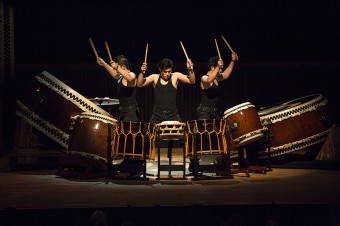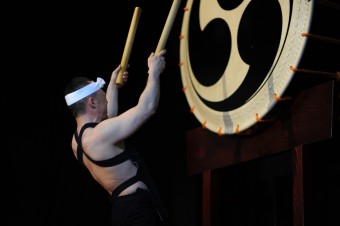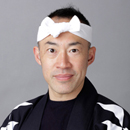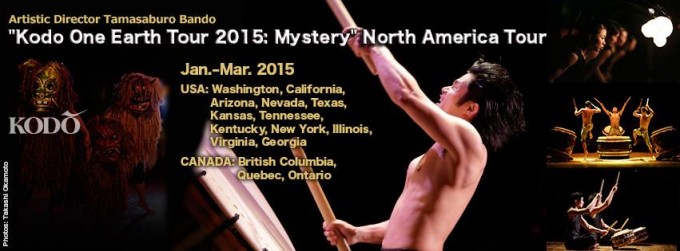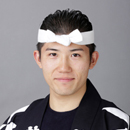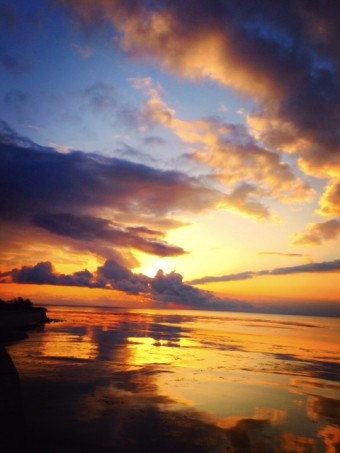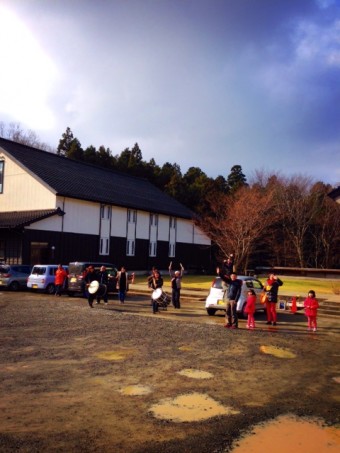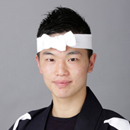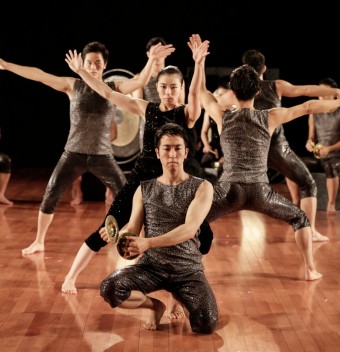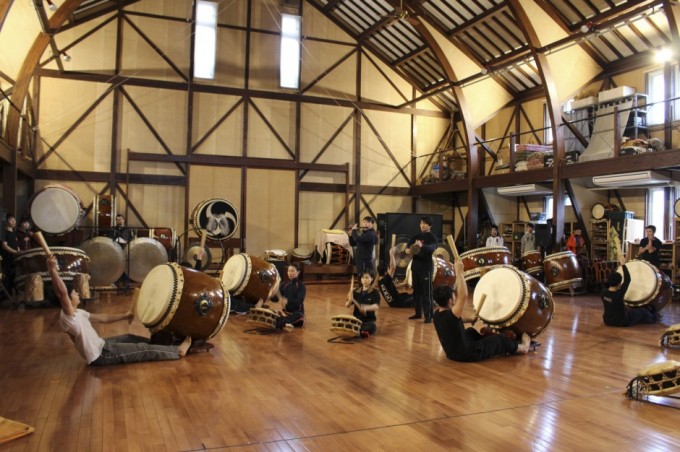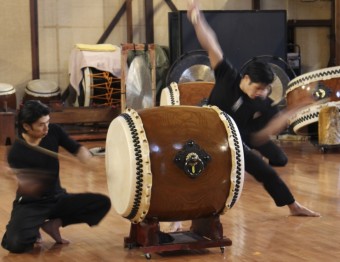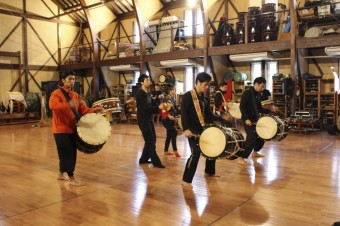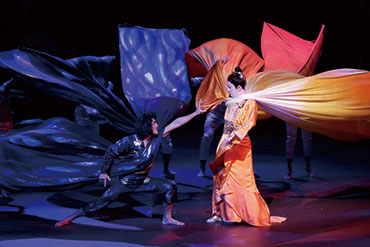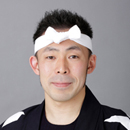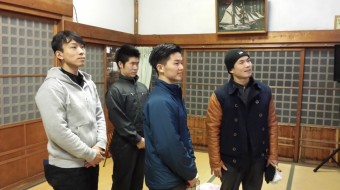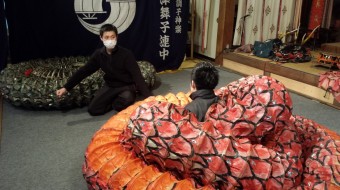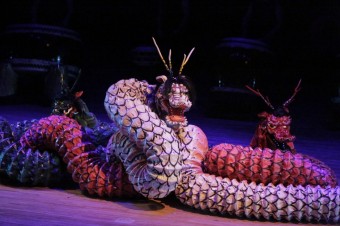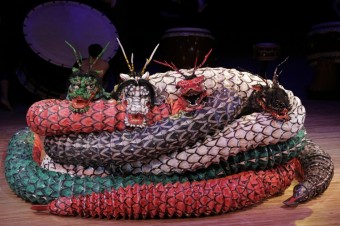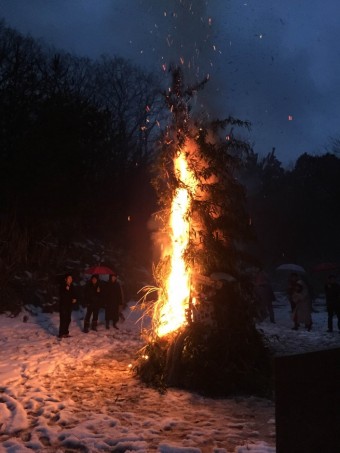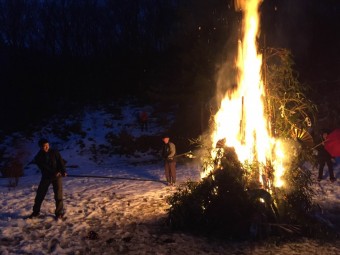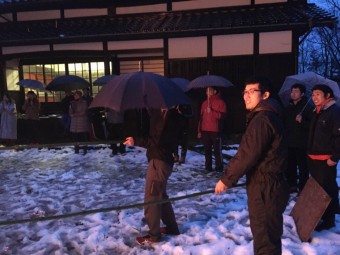“New Year’s Greeting” by Tomohiro Mitome
Feb. 1, 2015
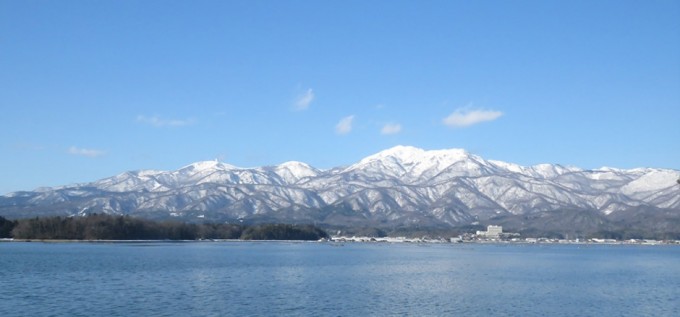
Almost three years have passed since the Kodo group adopted its current new structure.
The core pieces that Kodo’s senior members forged in the early years of our group have been at the heart of Kodo’s performances for over 30 years. For better or worse, I used to think that the base of each Kodo performance lay in those early works.
Even if we added new pieces to our performances, the pillars always remained the same. This became a habit that we couldn’t break, but when Tamasaburo Bando assumed the role of Kodo’s artistic director, he pulled us out of that rut and off into new directions. He watched Kodo closely for many years and already had a deep understanding and love for our group when he accepted our invitation to become Kodo’s artistic director in 2012. And now, here we are today.
Photo: Simon Jay Price
The history of taiko performing arts as a stage performance is still rather short. However, I think that the time has come for Kodo to take on new approaches, which will in time deepen and become history themselves. I think it is time for us to embrace performance styles that capture a certain era, as well as expressions from past eras. We can only learn the worth of wearing a hanten (coat), our standard costume, once we take it off. When I teach at the Kodo Apprentice Centre, there are some things that the apprentices can only understand once I go to the trouble of showing them the opposite extreme.
In March, we will present a performance called “Michi,” which features our classic pieces from the 1990s. It’s not just an “encore” performance of these numbers. Instead, we are experimenting to see how our current performers will perform and express those pieces with their own fresh sensibilities. We hope to give new life to Kodo’s classics and show them in a brand new light.
This year, we have a wide array of activities lined up to share with you, ranging from grand productions to small performances.
I kindly ask for your continued support throughout 2015.
Tomohiro Mitome, Kodo Ensemble Leader
Motofumi Yamaguchi: An Interview by Johnny Wales
Motofumi Yamaguchi: An Interview by Johnny Wales
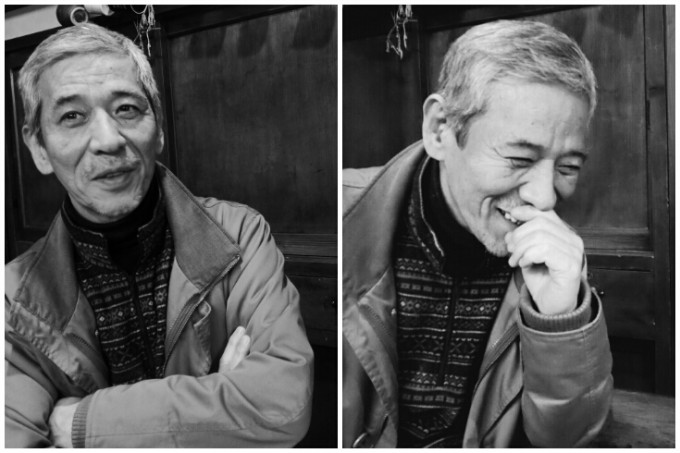
Motofumi, mid-interview (Photos: Johnny Wales)
Composer, arranger, fue (bamboo flute), koto (Japanese harp), shamisen (Japanese banjo-like stringed instrument), kokyu (Japanese violin), flute, cello and piano player Motofumi Yamaguchi was born in 1954 in Ibaraki Prefecture, just up the coast from Tokyo. His family moved to the big city when he was five years old. At high school and university (The Musashino Academy of Music) he studied Western classical music, composition, piano, cello and flute.
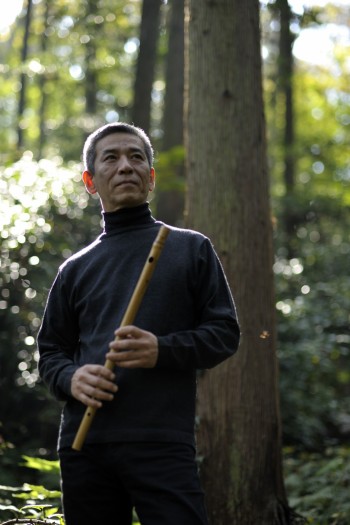
Photo: Takuro Susaki
In those days classical Japanese music was not generally held in very high regard among fellow students, and even some of the staff. It was seen as not quite as real as music from say, Germany or Italy. Motofumi began to feel this was very strange. Why shouldn’t Japanese have greater respect for their native culture? So he began seeking out performances of Noh and Kabuki, shamisen, koto and even Buddhist shomyo chanting. He was pleasantly surprised to discover that they felt very comfortable to him. He began to sense that he would be able to express himself more naturally in Japanese genres than Western. And so, at the age of 18, he began to study under shamisen (jiuta style) and koto teachers living nearby. He was surprised at how quickly he progressed and began to think that he had discovered a better, more natural direction for his career.
He was also beginning to tire of the big city and to dream of a life making music in the country. One day, while listening to his car radio, he heard vocalist and composer Ryudo Uzaki talking enthusiastically about his wonderful experience making music on Sado Island with a taiko group called Sado no Kuni Ondekoza. He talked about how amazing not only the taiko, but the koto and shamisen sounded too. Motofumi was fascinated and so went out and bought the two available Ondekoza records. They changed his life. As koto and shamisen were two of his instruments, he thought the group might have some use for him. He had heard about Ondekoza’s strict physical regimen and so decided to buy a bicycle. He would combine getting into shape with a 3-month holiday touring Japan. He quit his part-time job, drained his bank account and hit the road.
It was mid-November 1980 when he arrived unannounced at the group’s old wooden school house overlooking Mano Bay. After being reprimanded for not calling ahead, he was invited in and spent 3 days running at the crack of dawn, helping with cooking and cleaning and watching the group train. He returned to Tokyo with the understanding that he would move to Sado in January. Those were the days when there were no interviews, tests nor an apprentice system to join the group. If you showed up, demonstrated enough dedication and persistence, chances are you were in. Motofumi says with a chuckle that he (and quite a few other senior members) probably wouldn’t have gotten anywhere near the place under the current way of doing things!
This was just the time that Ondekoza was splitting off from the group’s founder Mr. Tagayasu Den, so things were in a great state of flux. Back in Tokyo, Motofumi met with Mr. Den and helped around the office for a week. Mr. Den suggested he learn the fue, and rather strangely, that he grow his beard. Motofumi followed his advice on the former matter and after arriving on Sado in the New Year he spent the next six months at the school house while the group toured, teaching himself the Japanese flute. It wasn’t long before he was touring with the group, something he carried on doing – including long stints as Musical Director – for the next 35 years.
“The 2015 North America Tour Begins!” by Yui Kawamoto
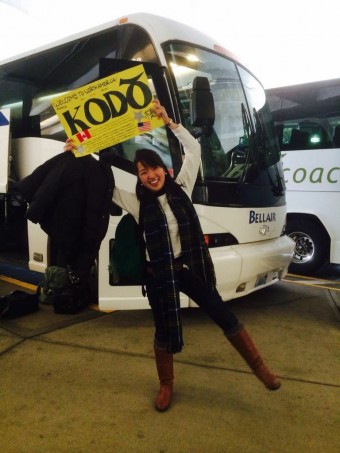
On Jan. 26, the One Earth Tour members arrived safely in North America!
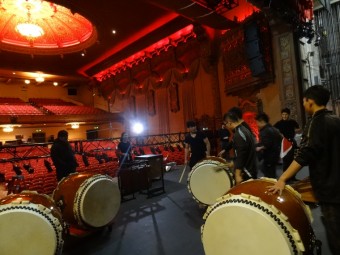
Today, we unpacked our cargo at the first performance venue in Bellingham, Washington.
It’s a cute theater in a small town.
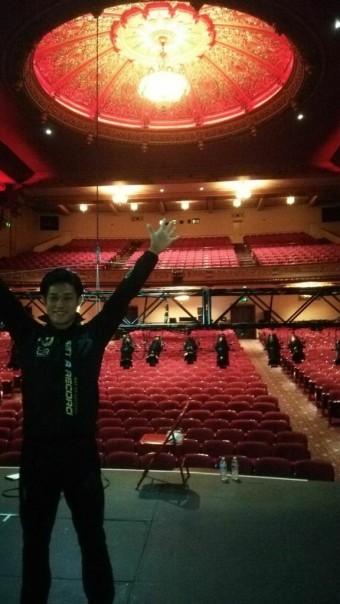
Tomorrow is our opening night!
We look forward to seeing you all at Bellingham’s Mount Baker Theatre.
Jan.–Mar. 2015 “Kodo One Earth Tour 2015: Mystery” North America Tour
http://www.kodo.or.jp/oet/index_en.html#schedule13a
“Another Side of ‘Mystery'” by Otodaiku
The “Kodo One Earth Tour 2015: Mystery” North America Tour is about to begin. This production premiered in Japan in December 2013 and it has just set off on its first tour abroad. We are really looking forward to seeing how the audiences in the USA and Canada react to this new programme.
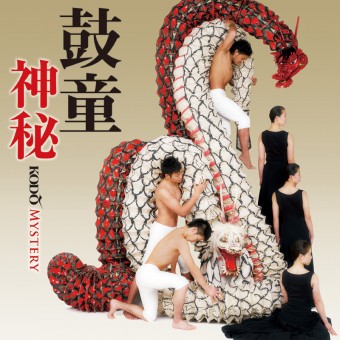
Last year, we released the music from “Mystery” as an album, which captures the work in another unique light. The composers created new arrangements of their stage pieces especially for the album, which we then recorded at Kodo Village.
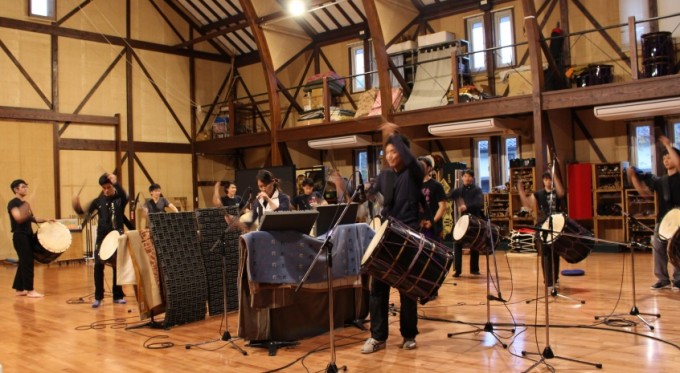
Each performer took great care to pack each and every sound with feeling. We hope you will enjoy the album, as a fresh look at the music from this “One Earth Tour” stage performance.
“Mystery” is available from Kodo performance venues, Kodo Online Store, iTunes, CD Baby, and Amazon MP3.
【Listen to Track Samples Online】Discography | Mystery
【Purchase Download Version】iTunes, Amazon MP3, CD Baby
【Purchase CD】Kodo Online Store
【”Kodo One Earth Tour: Mystery” Preview】YouTube
“Transit at Incheon International Airport” by Tetsumi Hanaoka
Jan. 26, 2015
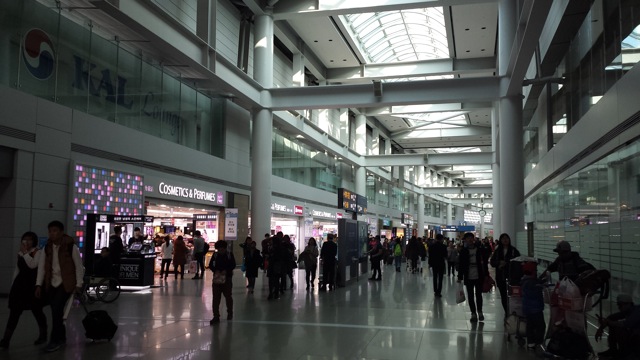
A couple of hours after we left Japan, we arrived at Incheon International Airport in South Korea, were we waited in transit for our flight to Vancouver.
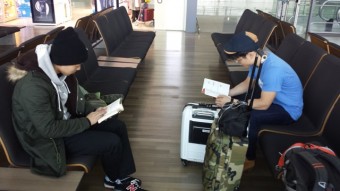
We ate lunch, looked over our tour schedule, double-checked our recent performance videos, and did other bits & pieces of tour preparation to pass the time.
See you soon, North America!
“Kodo One Earth Tour 2015: Mystery” North America Tour
“Our Morning Departure from Sado Island” by Shogo Komatsuzaki
Jan. 25, 2015
Sado Island sunrises are so beautiful.
The freezing cold air stinging my nose, quiet waves, birds chirping, the scent of the mountains…
I will remember these sensations, sights, and sounds, and take them with me on the road.
All over the world, people experience nature in the same way, using with all their senses.
We have a young cast for this tour and we will do our very best, make each day count, and work hard in the hope that our audiences can sense nature, Sado Island, and Japan, through our performances.
Off we go!
North America, see you soon!
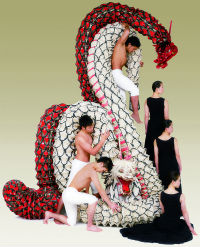 “Kodo One Earth Tour 2015: Mystery” North America Tour
“Kodo One Earth Tour 2015: Mystery” North America Tour
Kodo Online Store: Kodo Original Chappa Back in Stock!
Thank you for your patience! Kodo original chappa (cymbals) are back in stock and now available from Kodo Online Store!
Our chappa are made by craftsmen in Niigata who use a special metal-spinning technique. The rings are cut from a metal cylinder so they don’t have any joins. Each ring is attached to the chappa by hand, which we do ourselves with great pride, checking the tone and fine tuning them as required to make them function and sound just right.
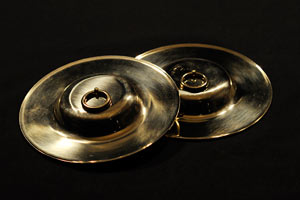
Kodo Original Chappa (5 (go)-sun size) http://kodo.shop.multilingualcart.com/goods_en_jpy_5.html
DVD “Legend” and CD “Mystery” are now on sale, too! Please browse through our lineup at the Kodo Online Store!
Kodo “Legend” http://kodo.shop.multilingualcart.com/goods_en_jpy_76.html
Kodo “Mystery” http://kodo.shop.multilingualcart.com/goods_en_jpy_77.html
Kodo Online Store
http://kodo.shop.multilingualcart.com/index_en_jpy.html
“‘Amaterasu’ 2015: Here We Go!” by Mitsuru Ishizuka
“Amaterasu” will return for encore performances in May this year at Osaka’s Shochiku-za Theatre. We started off our practice for 2015 by spending a couple of days rehearsing for this collaboration.
The lead performer and artistic director, Tamasaburo Bando, and Harei Aine, who will play the role of Ameno-uzume, didn’t join us for these rehearsals, so it was just us Kodo members. We went through the music, piece by piece, checking it all carefully together.
We recalled the programme mentally, then remembered it physically by playing it anew. We all performed the music with care and attention to detail, so that each one of us can take our own performance to a higher level than last season.
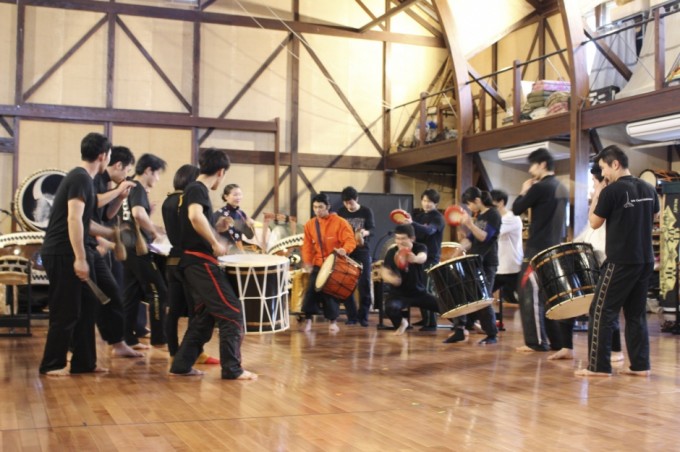
We have been given another opportunity to tackle this programme so soon after the last “Amaterasu” performances in 2013. We will focus on our musical instruments, our bodies, and our technique, so that we can create a deeper quality of sound that is even more feel-good to our audiences.
I hope you are looking forward to the upcoming performances in May!
Amaterasu 2015
“Studying Iwami Kagura in Shimane” by Tetsumi Hanaoka
Happy New Year!
I wish you all the best for the year ahead and thank you in advance for your support.
So, how did you all spend your New Year’s?
I went to Yunotsu in Shimane Prefecture to study Iwami Kagura (Iwami: a region, the west part of Shimane Prefecture/ Kagura: dance and music for the kami, or deities) with some of my fellow Kodo members. Our group, including a couple of new members, will perform the serpent dance Orochi featured in “Kodo One Earth Tour 2015: Mystery,” on the North American Tour that starts on January 28.
We were taught by Mr. Taizo Kobayashi and other members Yunotsu Maiko Renchu, a group of local performers that uphold Iwami Kagura in Yunotsu. Mr. Kobayashi is one of members who had helped us to create the programme for “Mystery,” who is an Iwami Kagura performer and a craftsman who carves masks. Mr. Kobayashi made the heads of all the serpents we use on stage for our “Mystery” performances.
During this visit, our lessons were mainly for the new members who will join this programme for the first time. They were taught to make very detailed movements so that the heads and bodies would move smoothly and they learned how to move so that the serpents would look real on stage. I also learned many new things. I can now see that while Iwami Kagura looks simple, it is performed with really well-refined movements.
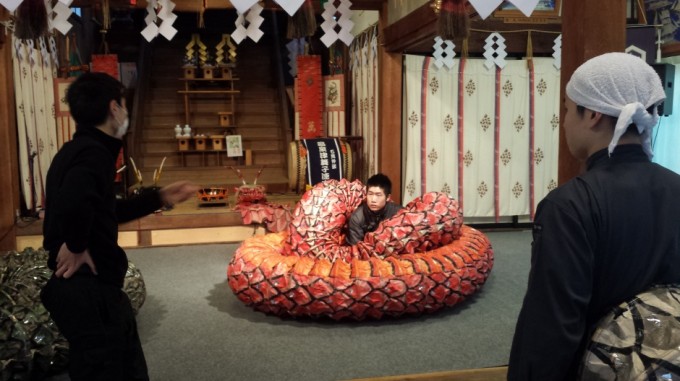
During these rehearsals, one of our missions was to take part in the local evening Kagura performance as serpents. This is a regular performance for Yunotsu Maiko Renchu, which is held at the Tatsuno-gozen Shrine every Saturday night. I was also fortunate enough to take part in this performance when I first came to learn Iwami Kagura here two years ago.
Community Development Course Trainee Report: “Dondoyaki at Kodo Village”
Jan. 15 Dondoyaki (New Year Bonfire) at Kodo Village
There was a Dondoyaki* event at Kodo Village on January 15.
Before dark it was raining, but when Kenta Nakagome cheerfully shouted out “Seh-no!,” the rain stopped and we all started singing a Dondo-yaki song as the bonfire was set alight.
I had never heard this song before.
Dondoyaki is a traditional Japanese event. The Kodo members burn their broken bachi (drumsticks), worn-out fans and bamboo dance props… so the essence of performing arts infuses the flames, taking that lifeforce up into the night sky in the smoke.
After the event, we, the Community Development Course trainees, were on duty watching the fire go out. As I watched the ashes in the dark, and weakened, gentle flames, I could hear many sounds as it crackled and burned.
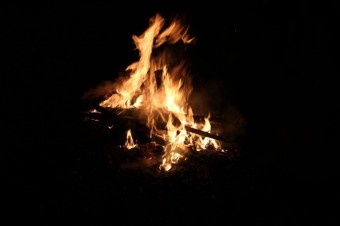
By Misaki Nakamura, 2014-2015 Community Development Course trainee
*Translator’s Note: Dondoyaki Explanation from Kodo eNews Issue 3
Every year on January 15th, Kodo Village holds its own Dondoyaki, a traditional Japanese fire ceremony to farewell the New Year gods back to the heavens. New Year decorations and good luck charms and amulets from the past year are burned in the fire, a tepee-like structure made of bamboo, thatching hay, and straw. At Kodo, players burn the drumsticks they can no longer use in this fire. It is said that the deity of the New Year goes back home with the smoke of Dondoyaki,, so we like to send the heart and soul forged in the drumsticks along with it. Mochi (pounded rice cakes) from the week before is also toasted over the fire and eaten to bring good health in the year ahead.




